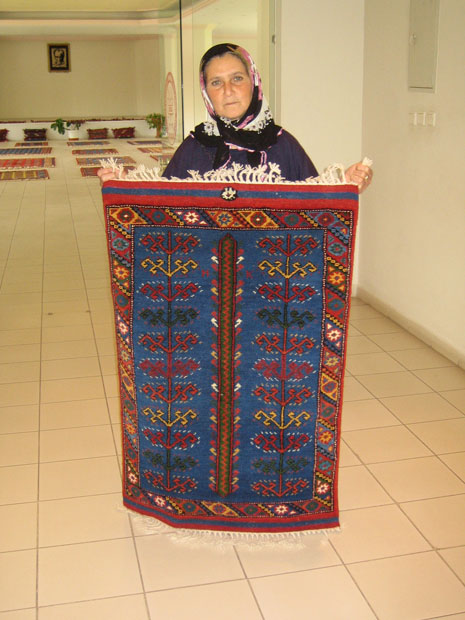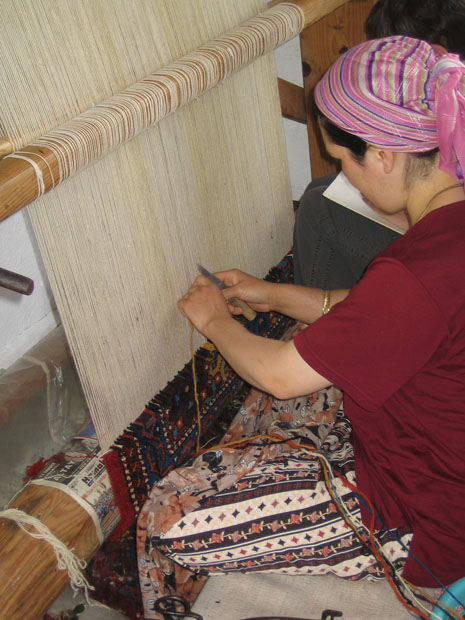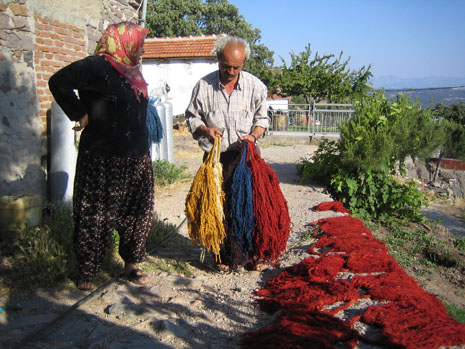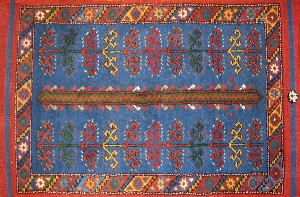Welcome to the second on-line edition of the Turkey Red Journal. For those of you who are new to the journal, the TRJ has been in publication since 1995. For more history about the journal, please check Vol. 12 Issue 2 in the archives.
Since the first issue went on-line in February of this year, I have heard from readers all around the world. This world-wide scope is reflected in the current issue. We have two articles from Australia: India Flint has written about dyeing with Eucalyptus and Pam Borchardt shares the story of the Plant Craft Cottage at the Royal Botanic Gardens, in Melbourne. From the Americas, Robin Smalley's article shares her insight on the social and economic aspects of cochineal production in Peru, and Judith Musick has documented her experiences of dyeing in Guatemala. From Asia, Nalin Bhutt has written about his encounters with natural dyes in his native India, and Nancy Zeller has written about a workshop she attended in Massachusetts with Uzbekistan dyers. In the gallery section is the artwork of Musa Kazim Basaran, a Turkish weaver and dyer, and of Masaco Kuroda, Kate Hall, Rebecca Burick, and Marcella Dziennik, students from the School of the Art Institute of Chicago.
The deadline for articles and artwork for the next issue is November 1, 2007. Please send your submissions to pfeldman@saic.edu. Back issues of the TRJ are available for purchase. Please contact me directly for further information.
In June, I was fortunate to be able to visit two carpet weaving cooperatives in western Turkey. They are part of the DOBAG Project, which was started in 1981 by Dr. Harald Böhmer and is now coordinated by Dr. Serife Atlihan of Marmara University in Istanbul. The goals of the project are to foster the weaving of traditional Turkish carpets using the finest natural materials and processes and to strengthen the social and economic standing of the women weavers in their villages. One cooperative is in Ayvacik, south of Çanakkale, and the other in Örselli, northwest of Manisa. DOBAG weavers make high-quality knotted pile carpets (hali) using only naturally-dyed handspun wool yarns. They work out of their houses, at their own pace, and receive a significant part of the proceeds when their work is sold by the co-op. DOBAG is unusual in the respect shown to the women who do the weaving and rewards they receive for their work.
| Nefise Kul with the DOBAG carpet she wove, in the cooperative building in Ayvacik. | Nursel Isik weaving a carpet in Ayvacik. | ||
 Photograph Copyright by Pamela Feldman |
 Photograph Copyright by Pamela Feldman |
||
| Safye Cinar, a DOBAG dyer, with a weaver in Örselli. | |||
 Photograph Copyright by Pamela Feldman |
|||
www.pamelafeldman.com
 Turkey Red Journal
Turkey Red Journal
